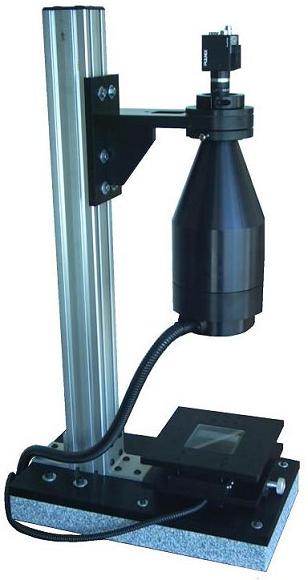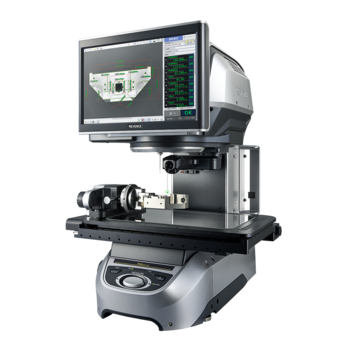Finding the best optical measurement method for your application
Finding the best optical measurement method for your application
Blog Article
The Role of Optical Dimension Equipments in Advancing Assessment Strategies
Optical dimension systems have actually changed assessment, bringing a level of precision that was when unthinkable. As you discover further, you'll find just how these systems are shaping the future of measurement and high quality control.
The Development of Assessment: A Historical Point Of View
As you check out the background of assessment, you'll find that its advancement shows humanity's mission for accuracy and standardization. From old worlds utilizing body parts as units of dimension to the advancement of standard weights and actions, each step reveals our desire for accuracy. The Egyptians built the pyramids using precise measurements, while the Romans advanced design with their advanced measuring tools.
Throughout the Renaissance, scientific developments changed the focus toward much more empirical techniques, paving the means for modern-day metrology. The intro of the metric system in the late 18th century marked a significant turning point, establishing global criteria. Throughout the 20th century, technical developments additionally transformed metrology, enabling highly exact measurements in numerous fields.
Today, width remains to progress, integrating digital modern technology and automation. This background highlights not just the relevance of dimension yet additionally our relentless quest of boosting precision and consistency in our increasingly complicated globe.
Concepts of Optical Dimension Solutions
Understanding the principles behind optical dimension systems is important for exact outcomes in width. You'll desire to take into consideration basic optical principles, measurement precision factors, and reliable system calibration methods. Each of these elements plays a crucial function in guaranteeing your dimensions are exact and reliable.
Fundamental Optical Principles
While checking out optical measurement systems, you'll experience essential optical concepts that develop the foundation of precise information procurement. Light behaves in predictable methods, and understanding these actions-- like diffraction, refraction, and representation-- is necessary for reliable dimensions. You'll utilize lenses and mirrors to adjust light and concentrate it onto your target, ensuring accuracy in your readings. In addition, the wave nature of light permits disturbance patterns, which can enhance measurement resolution. Polarization can additionally play a crucial role in distinguishing signal from sound, enhancing the clarity of your results. By grasping these principles, you'll be equipped to leverage optical modern technologies effectively, leading the way for advancements in assessment and guaranteeing your dimensions are both repeatable and reputable.
Measurement Precision Aspects
To attain high measurement accuracy in optical systems, a number of aspects enter into play, affecting the reliability of your results. The top quality of the optical elements matters greatly. Premium lenses and detectors decrease aberrations and noise, ensuring your dimensions are accurate. Second, ecological problems like temperature level and moisture can affect dimensions, so preserving a stable environment is necessary. Third, the alignment of the optical system is important; also small imbalances can result in substantial errors. Finally, the wavelength of light utilized impacts the resolution and accuracy of your measurements. By resolving these aspects, you can boost the total performance of your optical dimension systems, bring about even more dependable and precise lead to your assessment applications.
System Calibration Methods
Accomplishing high dimension accuracy is only part of the formula; correct system calibration strategies are just as vital in optical measurement systems. Next off, use known dimensions to validate the system's result and make needed modifications. With these strategies, you'll enhance the reliability of your optical measurement system.
Trick Technologies Behind Optical Dimension
Optical measurement systems count on a number of crucial modern technologies that improve accuracy and performance in metrology. One crucial technology is interferometry, which utilizes the interference of light waves to gauge tiny displacements and surface irregularities with severe accuracy. You'll also find laser scanning systems, which capture in-depth 3D information of objects quickly, making them important for dimensional evaluation.
In Addition, CCD and CMOS sensing units play a substantial duty in converting light into electrical signals, permitting for high-resolution imaging and exact dimensions. Advanced formulas for picture handling further boost dimension precision by analyzing data in actual time, straining sound and boosting features.
Finally, optical fiber give versatility and the capacity to gauge in challenging atmospheres while keeping signal stability. By leveraging these innovations, you can achieve superior lead to your metrology jobs, guaranteeing that your dimensions are both accurate and reputable.
Applications of Optical Measurement in Sector
As markets increasingly require precision and efficiency, the applications of optical measurement systems have actually ended up being important across numerous fields. In production, these systems assist you monitor measurements and resistances in real-time, making sure high quality control without time-consuming hands-on checks. In the automotive industry, optical dimensions help in straightening parts with accuracy, improving safety and security and performance.
In electronic devices, you're utilizing optical methods to inspect minute functions on circuit card, finding defects that might lead to failings. The aerospace field take advantage of non-destructive screening strategies, enabling you to assess materials and elements without compromising their honesty.
Optical dimension also plays an important function in fabrics, making sure material dimensions fulfill precise specs. optical measurement systems. With their capacity to supply high-resolution information swiftly, these systems encourage you to make enlightened decisions, simplify processes, and eventually drive development across your market
Enhancing Precision and Efficiency in Measurements
When you think of improving accuracy in measurements, accuracy in your measurement strategies is vital. By enhancing these processes, you can achieve quicker outcomes without sacrificing quality. Allow's check out just how adopting sophisticated optical dimension systems can elevate both precision and performance in your work.
Accuracy in Dimension Techniques
Accuracy in measurement strategies is important for achieving reliable results in width, specifically considering that small inconsistencies can lead to considerable errors. By making use of sophisticated optical dimension systems, you can improve the precision of your dimensions. In addition, exact measurements allow you to keep high quality control, guaranteeing that items fulfill strict specifications.
Streamlining Dimension Processes
To enhance precision and efficiency in measurements, improving your measurement procedures is crucial. Start by embracing optical dimension systems that give real-time information, reducing the time invested in hands-on recording. These systems commonly incorporate effortlessly with existing software application, permitting you to automate information collection and evaluation.
Next, standardize your dimension procedures. By carrying out consistent more tips here treatments, you lessen variability and boost repeatability. Do not neglect to regularly calibrate your equipment to ensure its precision.

The Effect of Optical Measurement on R & D
As scientists endeavor to push the limits of technology, optical measurement systems have become vital devices in the advancement process. These systems offer you with precise, real-time data that improves your capacity to examine complex products and structures. In various fields, from biotechnology to aerospace, you rely upon optical dimensions to enhance styles and improve product performance.

With high-resolution imaging and non-contact techniques, you can minimize sample disruption, permitting even more exact outcomes. This capability to catch minute information accelerates your R&D cycle, allowing you iterate layouts quickly and efficiently. Optical dimension cultivates partnership throughout disciplines, as the data created is commonly quickly interpretable and shareable.
Inevitably, incorporating optical measurement systems into your study not only boosts efficiency yet also strengthens your understanding of the sensations you research study. By leveraging these innovative methods, you're better outfitted to introduce and stay ahead in an affordable landscape.
Future Patterns in Optical Measurement Solutions
With the quick advancement of technology, you're most likely to see substantial shifts in optical measurement systems that will redefine their application throughout different sectors. You'll observe an approach increased automation and integration of expert system, permitting real-time data analysis and boosted precision. Miniaturization is one more fad; compact devices will certainly allow dimensions in tighter rooms, making them optimal for areas like aerospace and biomedical applications.
Anticipate to see systems that can run in difficult environments, offering reliable dimensions in extreme conditions. As these innovations converge, you'll find that optical dimension systems not only boost accuracy however also streamline workflows, eventually driving development and efficiency in your tasks.
Regularly Asked Concerns
Exactly How Do Optical Dimension Solutions Contrast to Traditional Dimension Techniques?
Optical measurement systems use greater precision and faster outcomes contrasted to traditional methods. You'll find they capture even more information factors properly, decreasing human mistake and raising integrity, making them a recommended choice in numerous applications.
What Industries Advantage Most From Optical Measurement Systems?
You'll find industries like aerospace, vehicle, and electronics benefit most informative post from optical measurement systems. These sectors count on exact measurements to assure high quality and efficiency, improving performance and lowering expenses with innovative technology.

Are Optical Measurement Systems Expensive to Implement?
Optical dimension systems can be costly to execute, however their accuracy and effectiveness usually warrant the cost. Purchasing such innovation can lead to considerable long-lasting cost savings and renovations in top quality across various applications.
What Skills Are Needed to Operate Optical Dimension Systems?
To operate optical dimension systems, you'll require strong analytical abilities, interest to information, and proficiency in software program tools. Experience with optics and an understanding of measurement concepts will also boost your efficiency and performance.
Just How Do Environmental Aspects Affect Optical Measurements?
Environmental variables like air, temperature, and moisture high quality can misshape optical dimensions. You'll discover variations in precision as a result of light disturbance or refraction. optical measurement. Keeping stable problems is vital for exact and reputable optical dimension outcomes
Final thought
In summary, optical measurement systems are revolutionizing assessment by giving unequaled precision more tips here and performance. By using sophisticated principles and modern technologies, these systems enhance precision while decreasing interruptions in different industries. As you check out future patterns, you'll see just how the combination of AI and automation will certainly proceed to raise dimension practices, driving advancement and improving quality assurance. Accepting these developments will certainly be necessary for remaining competitive and attaining excellence in your field.
Achieving high measurement accuracy is just component of the formula; appropriate system calibration strategies are equally important in optical dimension systems.When you believe concerning improving precision in dimensions, accuracy in your measurement strategies is crucial. By using advanced optical dimension systems, you can boost the accuracy of your dimensions.To boost accuracy and efficiency in measurements, enhancing your measurement procedures is vital. How Do Optical Dimension Systems Compare to Typical Dimension Techniques?
Report this page